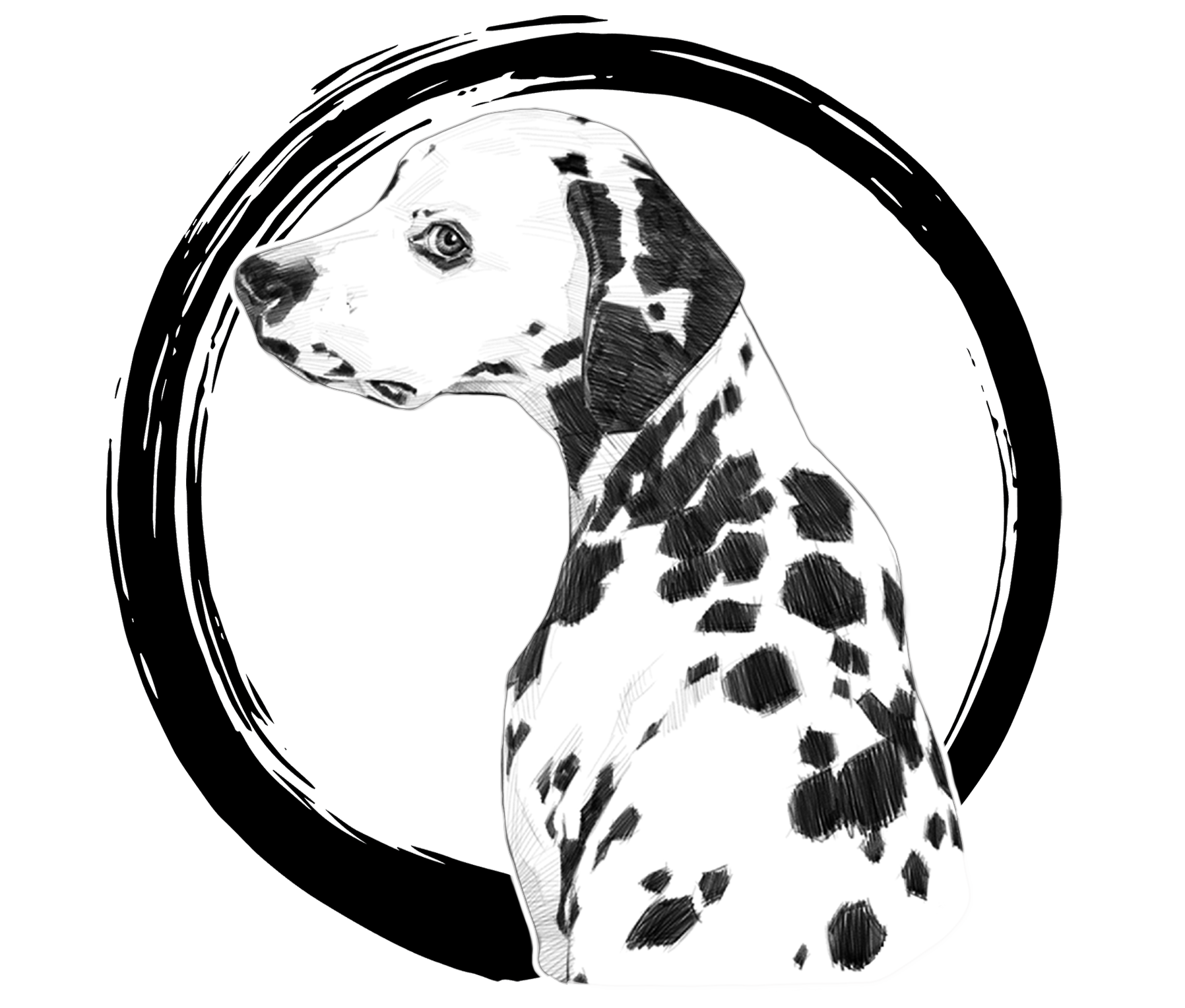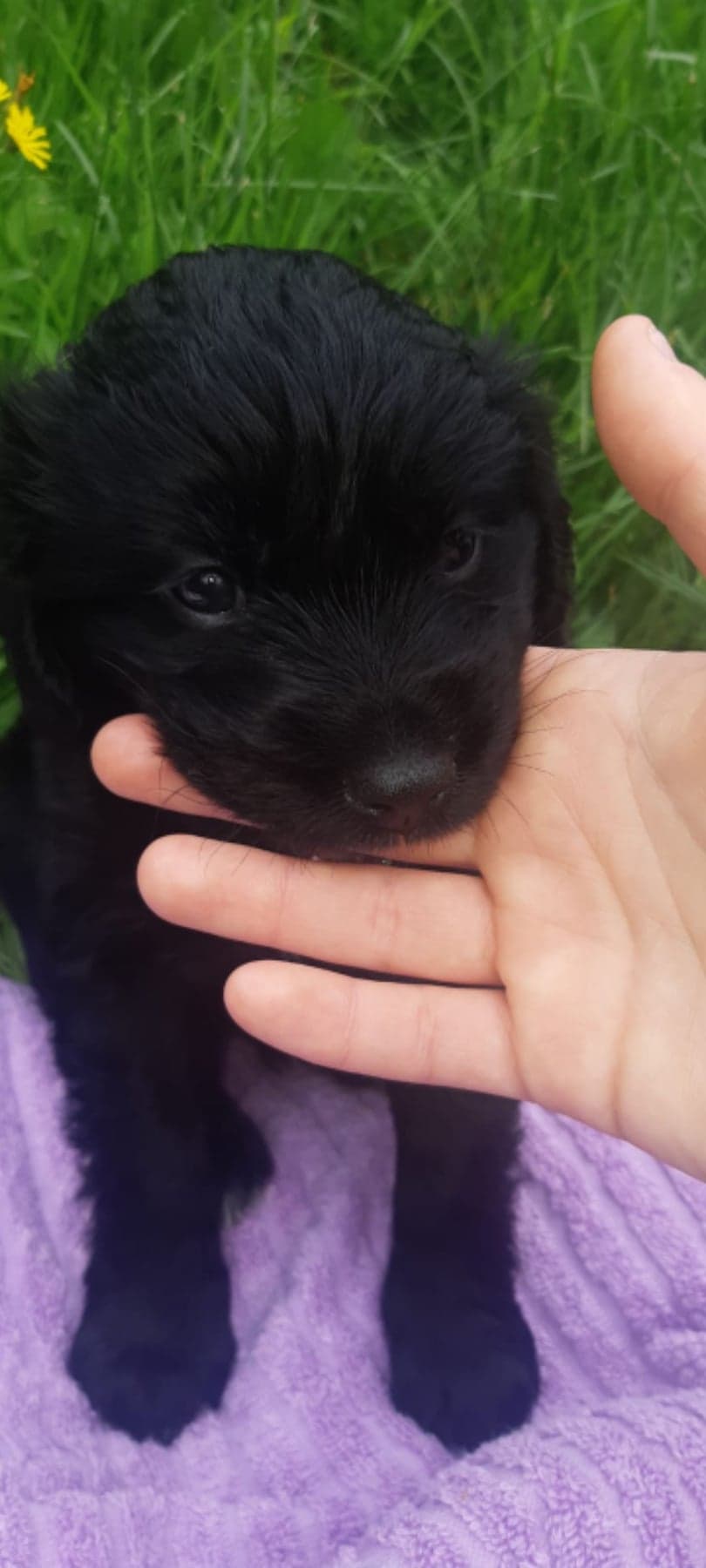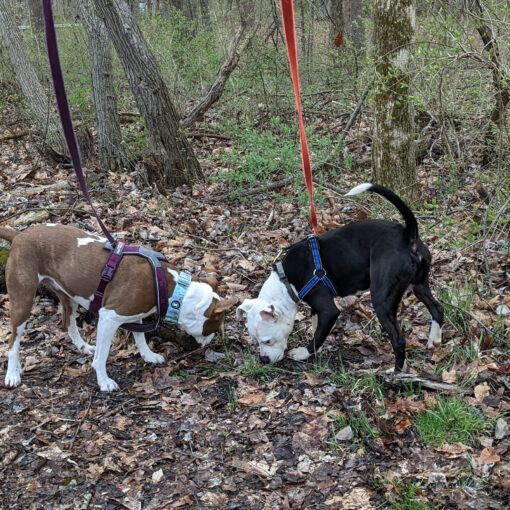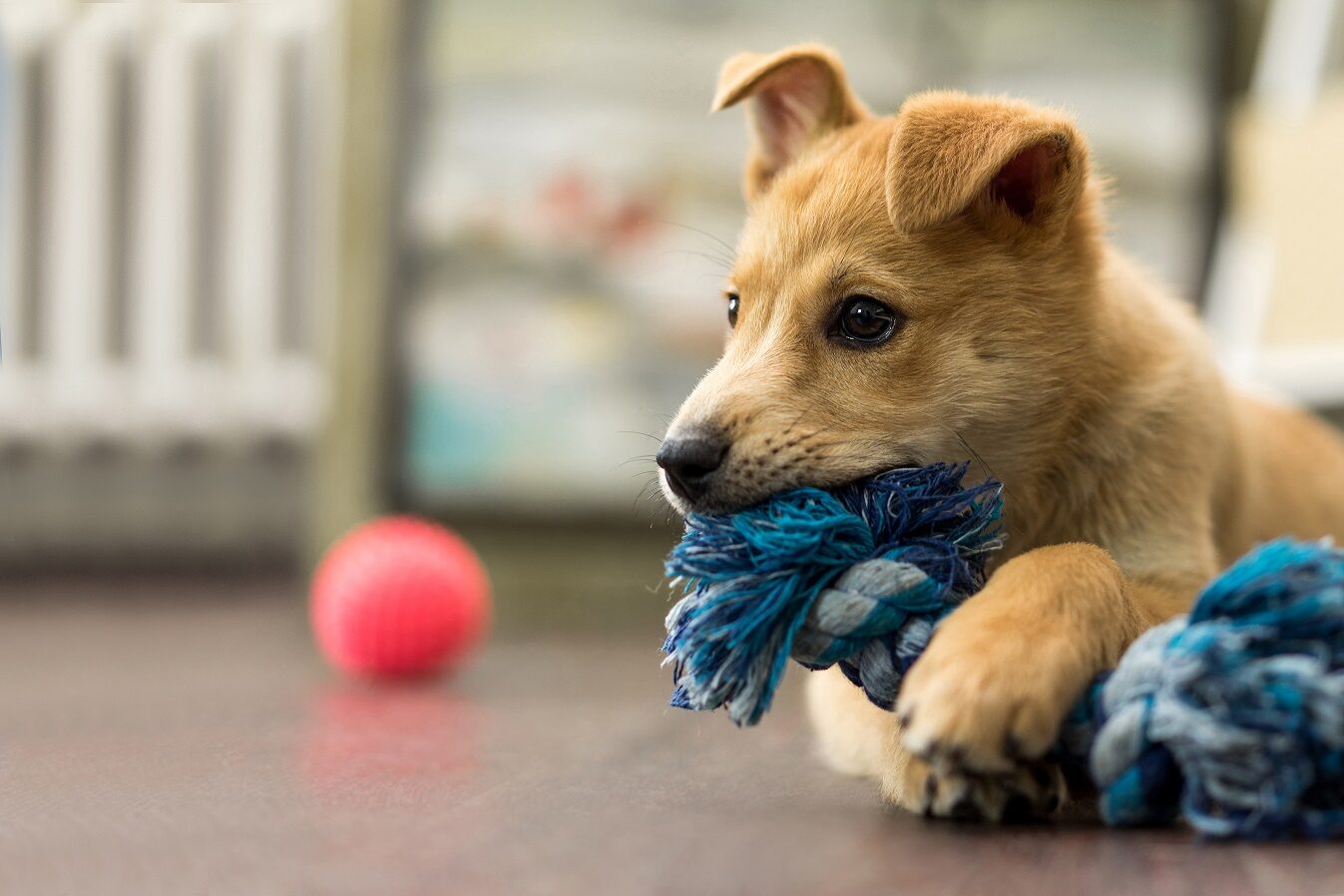Make Your Own Happiness Practice
Do you enjoy your dog? Do you have a special time each day you spend together? Many of us forget how much we really enjoy our pups, and taking time for that “special moment” can really have a positive impact on our relationship. Think of it like date night for your dog, but just a few minutes each day.
Having a ritualized “Happiness Practice” can improve your bond with your dog, increase your overall happiness, increase your pups happiness, reduce frustration, improve ability to play and rebound from stress, and, surprisingly, increases obedience and default manners. Far from spoiling our dogs, these little moments of happiness help to solidify our mutual appreciation and satisfaction. It can help to buffer us from stress during difficult times, and can help our relationship bounce back when we do hit a snag.
I like to think of Happiness Practice as something we do with intentionality, spending quality time, exchanging affection and really listening to our partner. I think of Happiness Practice as something we do most days of the week, at a predictable time or place. They are moments we, and our dogs, can look forward to each day that bring us joy. Having something joyous to look forward to every day makes life worth living, makes getting up in the morning bearable (for those prone to depression this is especially important), and helps to relieve anxiety.
For example, in my house, I spend the first few minutes every morning massaging the pups–each pup has a different preference and response from Beau arching his back and leaning in to me to PollyWoggles doing little pig grunts and head butts. We all yawn and stretch together, and we may even pick up a toy for a few minutes of play before the morning piddle walk. It’s clear by the way they wake up and solicit attention (Beau climbs in bed with me a half-hour before wake-up call to ensure he is first in line!) that they really enjoy this–it starts their morning off right. They know they are loved and cherished. (Bonus, I also know I am loved and cherished).
The keys to practicing happiness are to find things that you and your dog both enjoy, and set aside times for doing them. Sometimes your dog will come to love something that they were indifferent to before, just because they recognize it as part of a bonding routine.
You and your dogs may enjoy different things. For example, massage is usually very relaxing for dogs, and a great way to bond, but some dogs find it overstimulating or even scary. Each individual has preferences. Find out which kinds of touch make your dog want to play, and which calm him down and help him relax. Some dogs may be touch sensitive or have pain issues, so it is very important to use a Consent Test when developing routines based on touch.
Below, we compiled a few stories to give you ideas on ways to get started. At the end, we have an exercise for you to complete to get you started.
Ritual
One of the key components to the happiness practice is to ritualize it–to make it predictable. You can do this either by choosing the same time-of-day, or by initiating the activity using the same precursors (body language, place, scent, etc). Having the practice ritualized makes it predictable and comforting–something especially important for those prone to anxiety. Here are some examples where people (and their dogs) have ritualized certain activities by time of day.
Emily and Sully: Sully is very high-energy and has trouble settling. He tends to get overstimulated in the evenings, and he will literally roll around on his back trying to “bite” anything he can reach. We had worked hard to break this behavior, but were struggling.
Sully enjoys the fresh air, so I started putting him on the balcony in the mornings while I get ready for work. One day, he looked at me as if he wanted in. I opened the door and he walked over to our seat and stared at me. I went out with him, and it’s been our routine ever since! He lies next to me and either chews on his bone or takes a nap. Sometimes he just watches the birds.
Our morning break helps him relax, and he’s been doing a much better job of calming after an exciting event. Since we’ve started our “balcony time” he’s much better about teh nighttime biting. He used to have no “off switch” and now he can calm down fairly quickly. It’s made our bond stronger, because it helps both of us relax, and we are able to enjoy each other’s company without worrying about his energy.
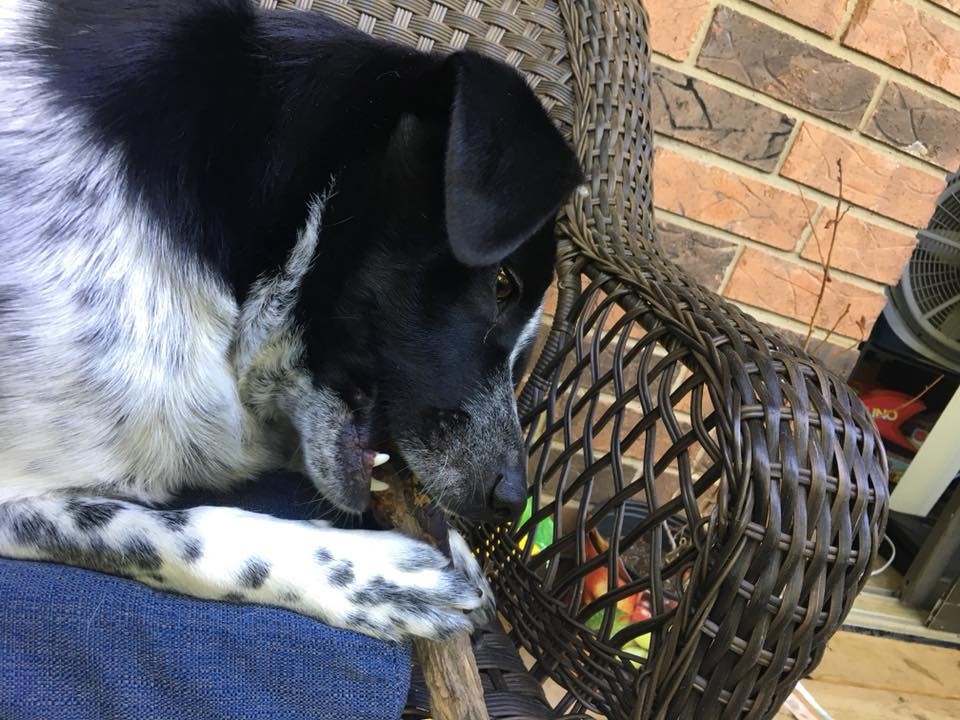
Jane and her pack: I have different morning and evening rituals with my dogs. Mia loves to snuggle when I first get into bed. Loki loves to crawl all over me in the mornings. Chloe is scared of almost all human contact–but she loves to be petted for about a minute, then she has to move away. I used to sing “You are My Sunshine” to Libby. Libby grew to recognize it, and wagged her tail and looked at me like she knew I was singing to her.
Rachel and Ziva: .When I get home, I play with Ziva over the gate. Then I take the gate down, gives her a minute to wiggle around and then rush into the bedroom. Ziva jumps onto the bed and puts her paws on my shoulders and give lots and lots of kisses. On weekends we also snuggle in bed in the morning. There’s a lot of ear rubs, eye rubs, neck scratches, kisses & sometimes even a little napping. Why no cuddling during the week? Ziva isn’t a morning girl. She sleeps while I get up, get showered, brush my teeth, and get dressed. Ziva doesn’t get up until I opens the blinds! (Pic of her snuggled on top of me on the recliner!)
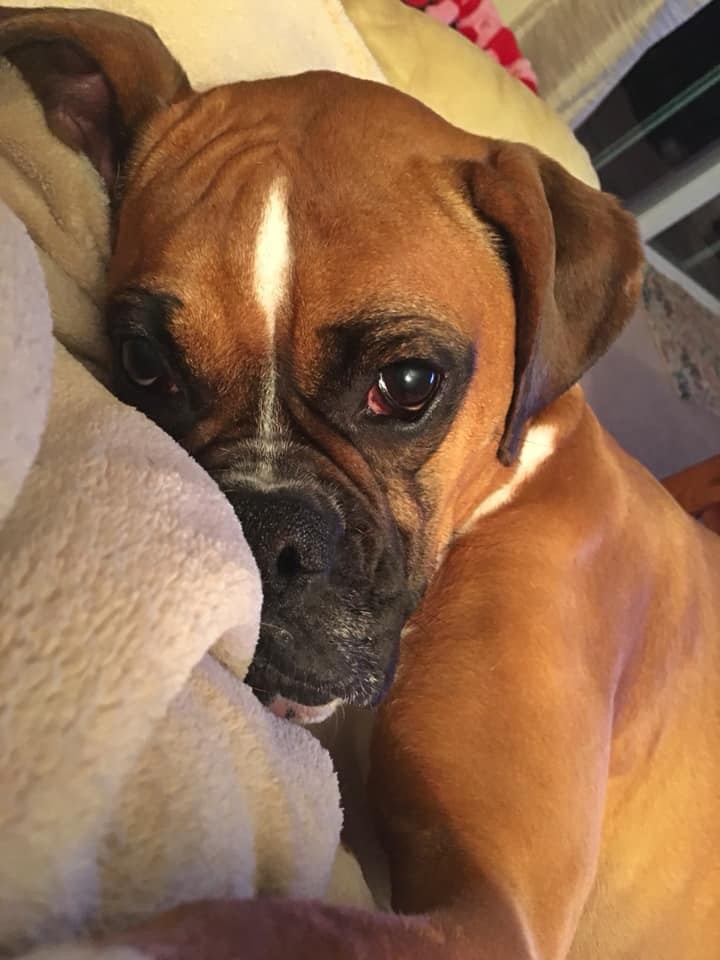
Petting
Petting dogs can be important to them, and healthy for you. Petting releases endorphins, and lowers your stress levels. There are right and wrong ways to pet your dog, of course, and it is important that you know what your dog likes (check out our file on consent test). When in doubt about whether your dog is comfortable with what you are doing, stop for a moment and look at your dog. If he wants more, he will move towards you or offer a different area to be petted. If he is not comfortable, he will look or move away.
Most dogs really enjoy being scratched in places that are hard to get to such as behind their ears, at the base of the tail, and under the collar. Most dogs do not enjoy being patted on top of the head, or being hugged (there are exceptions!).
Choice
Giving your dog a choice in your happiness practice can turbo charge the bonding value of this exercise! Every mammal, possibly every animal, really values choice. Our ability to choose to engage in an activity or not helps build trust and confidence. It is one of the foundations of mental health and wellness. When you accept your dogs choice, you show them consideration–that you will listen to them, and this will increase your bond.
We’ve talked about consent test (above) in reference to petting, but you can give them even more choices in your daily routine. In our ‘sniffy walk” (below) we choose to follow our dog and make our walkies more relaxing and enriching. Here are two examples of how some of our members incorporate choice into their daily routines.
Zoe and Nara
Zoé has a nearly perfect example of this! “Nara tends to sit by me and look at me, I start the question “do you want to…?” and fill it up with the options: go for a walk, play, eat, sleep, etc. Every single time I start the question, her ears perk up in anticipation and as I mention the options, she either lowers them or keeps them up. The option in which she keeps her ears up is the one she wants to do at that moment.”
Kasey and her pup
Kasey has incorporated choice into fetch. (Now, if only Labradors could learn to do this!) ”My pup sometimes loves to fetch, and sometimes prefers to keep the ball to chew/play on his own. So I started asking him “Can I have it?” Sometimes he says NO WAY and takes the ball and runs away. That’s totally fine with me, and he gets to frolic and chew and bounce it to his heart’s delight. But sometimes I ask “Can I have it?” and he drops the ball at my feet and backs up a good 5 feet, waiting for me to throw it. I love seeing the happiness that comes from him realizing he can make his own choices!!”
Action
Some dogs really love action–in fact, most dogs love a rousing game now and again. But some dogs REALLY love action. What kinds of play activities or fast-paced activities do you do with your dogs? My guys are hunting dogs, so one of our daily rituals involves going out at sunrise to find, and point, birds in the field. Most dogs will play chase me/chase you, or play a rousing game of tug or fetch, or play with a flirt pole. Here is the catch–to make this part of your happiness practice you need to be fully engaged and part of the action–not checking your cell phone or chatting with your friends at dog park. You need to be part of the game. You need to bond with your dog over the activity. One way to do this is to celebrate their wins, another way is to show them where to hunt. Get creative!
Comfort
All the things that give you and your dog happiness are great for providing comfort to each other in times of sadness or fear. Touch and voice can be very helpful. Here is a great story from Cole
Cole and Balio
“Almost every day, me and my Leonberger, Balio, share space, breathe deep, and do long, slow touch…he lies on me, or I lean on him (I’ll lean, then pull back to see if he invites more leaning or has something else in mind), usually on a bed… and, I sing to him. It’s not at a specific time of day, but he lets me know when it’s time, by a certain look and lean he does, or sometimes I ask him if he wants to, by a certain scritch and hum I do…
Balio deals with various forms of anxiety/reactivity, but we started this routine during a very traumatic time for me. I really needed to get work done, I was behind on all the deadlines, serious personal issues afoot, wracked with stress, literally hadn’t slept more than a few minutes at a time in 3 days and was physically ill/barely functional but trying to push through…
So, I think it’s not rocket science to assume my stress was affecting him. I kept trying to work, but he wanted under the table, so I got under with him, played some calming music… I was going through all the motions, but could not calm myself down. He started to settle, and then start to whine and panic all over again…
He ran from under the table. He ran upstairs to my room. I was still trying to work… I brought my laptop…but I followed him. He was sitting on my bed. Did I mention I hadn’t slept in days? He whined at me. Stamped his feet. When I sat down next to him, he lay down.
I abandoned my work. I lay down next to him. He leaned in (this is my non-cuddler, the boy who does not like touch…)… I still couldn’t breathe, and I noticed his breathing would start to match mine-a pant, really, even while I stroked him slowly and calmly. I played music, my favorite songs to quiet myself down, and started singing to him like I did when he was a baby puppy. He turned in to the singing… I would sing, he would nuzzle in. And, I noticed singing = breathing. For both of us. I fell asleep, a nap-something I hadn’t done in years. He was calm. We spent much of that day in bed. And my non-cuddler became my deep pressure guy. I learned how he needed to be pet by how he responded to me, and me him. I’m learning to meet his needs and bond with him on a deeper level than I knew before, and we return to it nearly every day. We opened up a level to our relationship that is still mysterious and beautiful to me, as we continue to learn each other. We keep alive by breathing and leaning.”
More ideas
Happiness Practice can be extremely personal, though it should reflect something that both you and your dog enjoy, that you can do regularly, and that doesn’t take too much effort. Take a moment to reflect on your daily activities with your dogs. Do any of them bring you consistent joy? Does your dog “lean in” and ask for more? Do any of the stories resonate with you? Does it spark ideas that you would love to try? If you’ve printed this out, you can jot down some notes below. If not, a gratitude journal is a great way to get in touch with moments of happiness.
.Here are some ideas that we regularly include in our activities–all of them have been part of our happiness practice at one time or another. Explore and enjoy!
| Sniffy walk | Chase me / chase you games |
| Massage | Toy play |
| Brushing | Personal Play |
| Stretching | Bowling |
| Riding in the car | Butt rubs |
| Play Session (e.g. tug) | Parkour |
| Touch Games | Kisses/nuzzles |
| Sitting in the Sun | Snuggles with a movie |
| Exploring molehills | Getting “up” on stuff |
| Which hand | Coffee shop on the porch |
I like to think of “happiness practice” as something we do with intentionality, spending quality time, exchanging affection and really listening to our partner. In general, I like to use things that are not “just” things we do purely to satisfy basic needs. If you can bring happiness practice in to satisfying your basic needs—so much the better.
One way to tell if you are getting the most out of your happiness practice is to reflect on your state of mind when engaging in it. If you are repeatedly throwing a ball for your dog, it may satisfy your dog’s need for exercise, but is it happy? If you are thinking about work or the dog can’t take a break to have a fun game of “chase”, then it isn’t something you or the dog are likely enjoying. For now, I would start with something unique that does not involve basic needs like exercise or food, and focus on something entirely social and interactive.
About the author: Kate Coberly is best known as the founder of DT101 Community. She is a Certified Dog Behavior Consultant, a Fear Free ™ certified trainer, and has a PhD in evolutionary biology. She loves helping people build happiness and bond with their dog. She works specifically with behavior issue in difficult dogs, including aggression and OCD. Caitlin lives on her farm in western Oregon with her pack of loony dogs and 3 opinionated horses.
